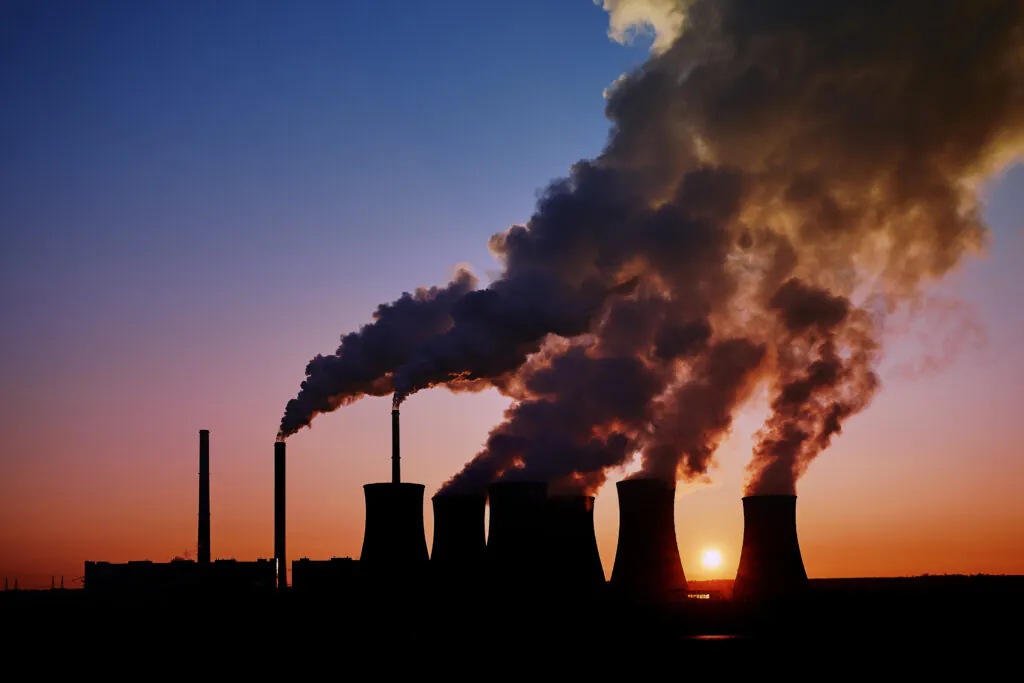Overview of the Energy Industry
The energy industry is vast and comprises petroleum, gas, coal (also called fossil fuels), nuclear, and renewable or clean energy. Companies that produce electricity from various sources, including fossil fuels, nuclear, and renewables are also included in the energy industry.
In recent times, renewable energy has started taking precedence over non-renewable energy sources such as petroleum and coal. This is because of rising consumer awareness about global warming and government initiatives to curb pollution. Although both the renewable and non-renewable energy sectors are growing at a healthy rate, there are some challenges faced by both these sectors.

Technological Innovations in the Energy Industry
The energy industry is witnessing a wave of technological innovations aimed at improving efficiency, sustainability, and reliability. These innovations are driving the energy industry toward a more sustainable and efficient future.
| Area of Innovation | Innovation and Its Impact/s | |
| Renewable Energy Technologies | Solar and Wind Power: Advances in photovoltaic cells and wind turbine designs are making these sources more efficient and cost-effective. | Hydrogen Technologies: Hydrogen is being explored as a clean fuel alternative, with innovations in production, storage, and utilization. |
| Energy Storage | Battery Technologies: Improvements in lithium-ion batteries and the development of solid-state batteries are enhancing energy storage capabilities. | Grid-Scale Storage: Technologies like pumped hydro storage and advanced flywheels are being used to store large amounts of energy for grid stability. |
| Smart Grids | Smart Meters: These devices provide real-time data on energy consumption, helping consumers and utilities manage energy use more efficiently. | Grid Management Systems: AI and machine learning are being used to optimize grid operations and integrate renewable energy sources. |
| Energy Efficiency | Innovative Heat Pumps: New designs are making heat pumps more efficient for heating and cooling applications. | Energy-Efficient Buildings: Smart building technologies, including advanced insulation and automated energy management systems, are reducing energy consumption. |
| Electric Vehicles (EVs) | EV Charging Infrastructure: Rapid advancements in charging technology are making it easier and faster to charge electric vehicles. | Vehicle-to-Grid (V2G) Technology: This allows EVs to supply power back to the grid, enhancing grid stability and providing additional energy storage. |
| Artificial Intelligence and Data Analytics | Predictive Maintenance: AI is being used to predict equipment failures and schedule maintenance, reduce downtime, and improve efficiency. | Energy Consumption Analytics: Advanced analytics are helping businesses and consumers optimize their energy use based on real-time data. |
Energy Industry Challenges: Current Issues & Solutions
Key Challenges Facing the Energy Sector
Issues with Shift to Electricity and Hydrogen
Renewable energy sources like solar and wind are intermittent, meaning they do not produce power consistently. This requires advanced energy storage solutions and grid management to ensure a stable power supply. The transition to electrification can exacerbate economic disparities, as not all regions have equal access to the necessary resources and infrastructure. Ensuring equitable access to clean energy is a significant challenge. Building infrastructure for hydrogen production, storage, and distribution is a massive undertaking. This includes pipelines, refueling stations, and storage facilities.
Meeting Decarbonization Targets
At the 2015 Paris Climate Change Conference, 200 countries committed to COP21, which identified an ambitious set of goals. In a bid to limit global warming and related activities across the world, countries are framing legislation to curb emissions and provide incentives to businesses. Mature economies need to accelerate their emission reduction efforts significantly, while emerging economies must adopt lower-carbon growth paths sooner. Scaling up carbon capture and storage (CCS) technologies is crucial but challenging. The current pipeline for CCS projects is insufficient, and there is uncertainty about commercially viable business models.
Lack of Access and Affordability
Energy access has been largely limited to only the developed and urbanized parts of the world. The accessibility problem is still posing as a significant challenge to the energy industry. Energy prices vary across the globe depending on numerous factors. In multiple regions, the issue of affordability seems to be more prominent as it drives the prices of all other consumer goods. For instance, Germany has one of the highest rate per kilowatt hour (KWh) of electricity at €28.18, which compels manufacturing units in the country to outsource production to low-cost regions.
Aging Infrastructure and Grid Security
The electricity grid infrastructure in many countries worldwide is old and not designed to accommodate renewable energy sources. It requires significant upgrades to handle modern energy demands and integrate renewable sources. Upgrading grids and building new transmission lines are essential but costly. Furthermore, these aging electrical grids are vulnerable to cyberattacks, which can cause widespread disruptions. Enhancing cybersecurity measures and transitioning to more resilient, distributed generation systems are critical.
Geopolitical Factors and Price Volatility
Political instability, conflicts, and trade policies can disrupt energy supply chains and impact global energy markets, affecting global energy availability and prices. Over the past few years, the energy sector has seen extreme price volatility. From the 15-year low witnessed in 2019 to hitting near 20-year highs a few years later, consumers are bearing the brunt of higher energy prices. Much of this price volatility was related to the post-Covid economy and geopolitical situations, such as the Russia-Ukraine conflict.
Need for Higher Investments
The transition to renewables requires massive investments in new technologies, infrastructure, and research. This includes scaling up carbon capture, utilization, and storage (CCUS) technologies. Similarly, producing green hydrogen (from renewable energy) is currently more expensive than producing hydrogen from fossil fuels. Reducing these costs through technological advancements and economies of scale is essential. Clear and supportive policies are needed to attract investments and drive innovation in the energy sector.
Strategies to Overcome Energy Industry Challenges
| Challenge | Solutions | |
| Issues with Shift to Electricity and Hydrogen | Developing and deploying advanced energy storage systems, such as batteries and pumped hydro storage, to manage the intermittent nature of renewable energy sources. | Governments can create policies and regulations that support the development of a hydrogen market, including mandates for hydrogen use in specific sectors. |
| Meeting Decarbonization Targets | Governments can provide financial incentives, such as subsidies and tax credits, to encourage the adoption of electric vehicles (EVs) and renewable energy technologies. | Implementing carbon pricing mechanisms, such as carbon taxes or cap-and-trade systems, to incentivize emission reductions. |
| Lack of Access and Affordability | Creating financing mechanisms to ensure that all regions, including underserved communities, have access to the necessary resources and infrastructure for electrification. | Expanding electrification efforts in rural and underserved areas through decentralized renewable energy systems like mini-grids and solar home systems. |
| Aging Infrastructure and Grid Security | Upgrading the electrical grid to handle increased demand and integrating renewable energy sources is crucial. This includes enhancing grid resilience and incorporating smart grid technologies. | Implementing advanced cybersecurity measures, such as intrusion detection systems, firewalls, and encryption, to protect both IT and OT systems. Regularly conducting security audits and ensuring compliance with relevant regulations and standards. |
| Geopolitical Factors and Price Volatility | Diversifying supply sources for critical materials like lithium, cobalt, and nickel to reduce dependence on a single source and mitigate supply chain risks. | Implementing recycling programs for batteries and other components to reduce the demand for new raw materials and promote a circular economy. |
| Need for Higher Investments | Developing hydrogen hubs where production, storage, and distribution infrastructure are co-located to optimize efficiency and reduce costs. Scaling up hydrogen production facilities to achieve economies of scale and lower production costs. | Building dedicated hydrogen pipelines and retrofitting existing natural gas pipelines to transport hydrogen. Issuing green bonds to raise capital for renewable energy projects can provide low-cost financing options. |
Future Trends in the Energy Sector
Some advanced technologies like smart grids and AI and IoT, which enable more efficient and resilient energy systems, are being used to optimize energy consumption, predict maintenance needs, and enhance grid management to at present. However, along with ongoing trends like DERs, several disruptive energy industry trends will lead to its significant transformation in the future.
Distributed Energy Resources (DERs)
The rise of DERs, including rooftop solar panels, home batteries, and microgrids, is transforming the traditional centralized energy model. This trend empowers consumers to become “prosumers” who both produce and consume energy. Enel X is a leader in the DER market, providing solutions like demand response, energy storage, and electric vehicle charging.
Advanced Nuclear Fusion
Currently, most nuclear power plants operate on nuclear fission. While nuclear fusion has been a long-standing goal, recent advancements in magnetic confinement and inertial confinement fusion technologies are bringing us closer to achieving practical and sustainable fusion energy. Commonwealth Fusion Systems is working on compact fusion reactors using high-temperature superconductors.
Solid-State Batteries
Solid-state batteries offer higher energy density, faster charging times, and improved safety compared to traditional lithium-ion batteries. They are still in the development phase but could revolutionize energy storage for electric vehicles and renewable energy systems. Solid Power is developing solid-state batteries with major partners like BMW and Ford.
Artificial Photosynthesis
Artificial photosynthesis aims to mimic the natural process of photosynthesis to produce hydrogen or other fuels from sunlight, water, and carbon dioxide. This technology could provide a sustainable and carbon-neutral way to produce energy. Twelve (formerly Opus 12) is an innovator in the field of artificial photosynthesis to convert CO2 into useful chemicals.
Perovskite Solar Cells
Perovskite solar cells are an emerging technology that promises higher efficiency and lower production costs compared to traditional silicon-based solar cells. While still in the research and development phase, they have the potential to significantly disrupt the solar energy market. Saule Technologies is a pioneer in flexible perovskite solar cells, aiming to integrate them into various applications.
Biomimetic Energy Systems
Biomimetic energy systems draw inspiration from nature to develop more efficient and sustainable energy solutions. Examples include wind turbines modeled after whale fins for improved efficiency and solar panels inspired by butterfly wings. Biome Renewables uses biomimicry inspired by the aerodynamics of a maple seed to design wind turbine retrofits.
Conclusion
The challenges of transitioning to renewable energy, managing carbon emissions, and ensuring cybersecurity will drive innovation and investment in the energy industry. The future of the energy industry will be driven by the shift toward decentralized, digitalized, and decarbonized energy systems, with renewable energy, advanced storage solutions, and green hydrogen playing significant roles. This transformation is expected to create a more sustainable, resilient, and efficient energy landscape.


